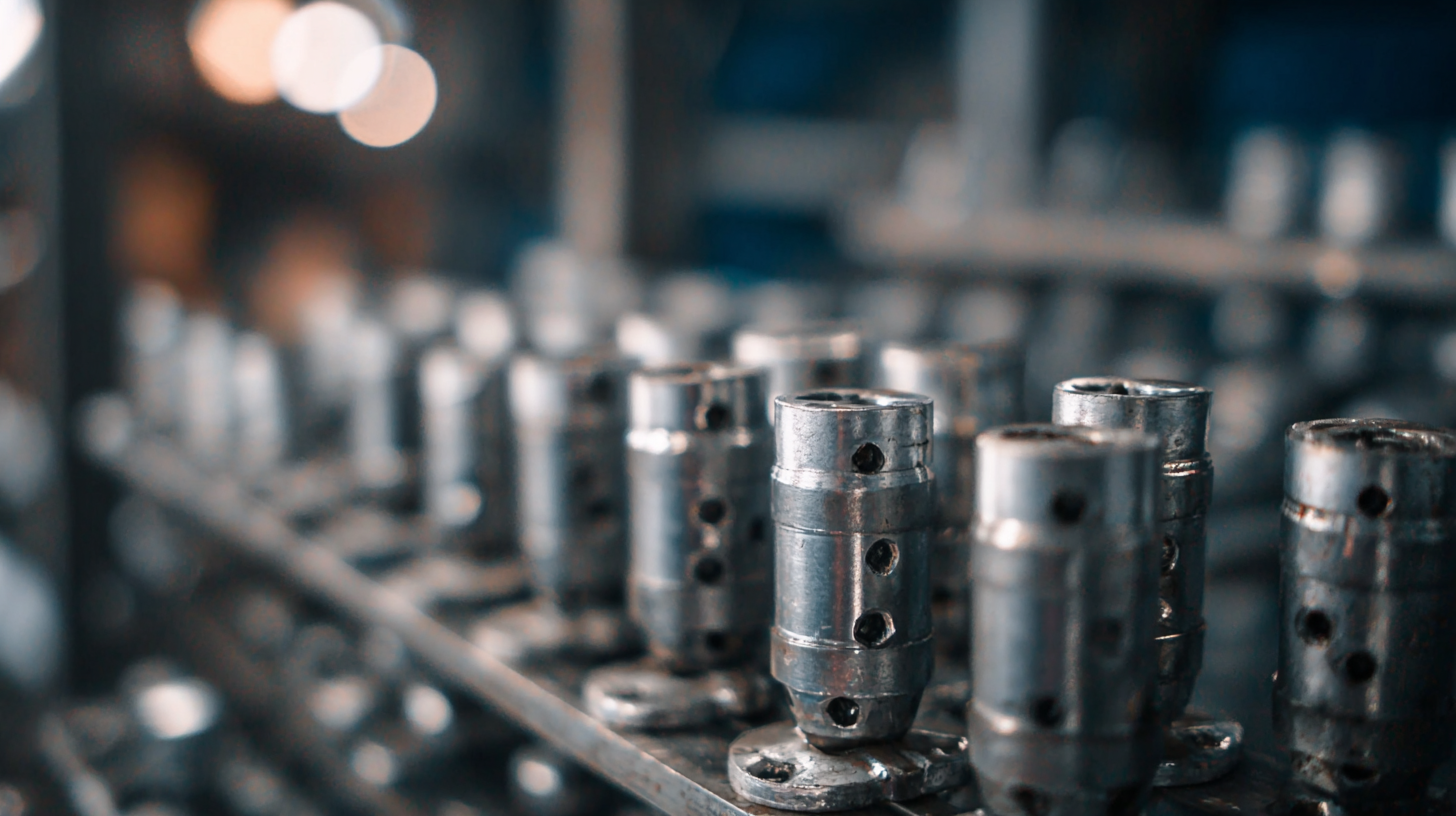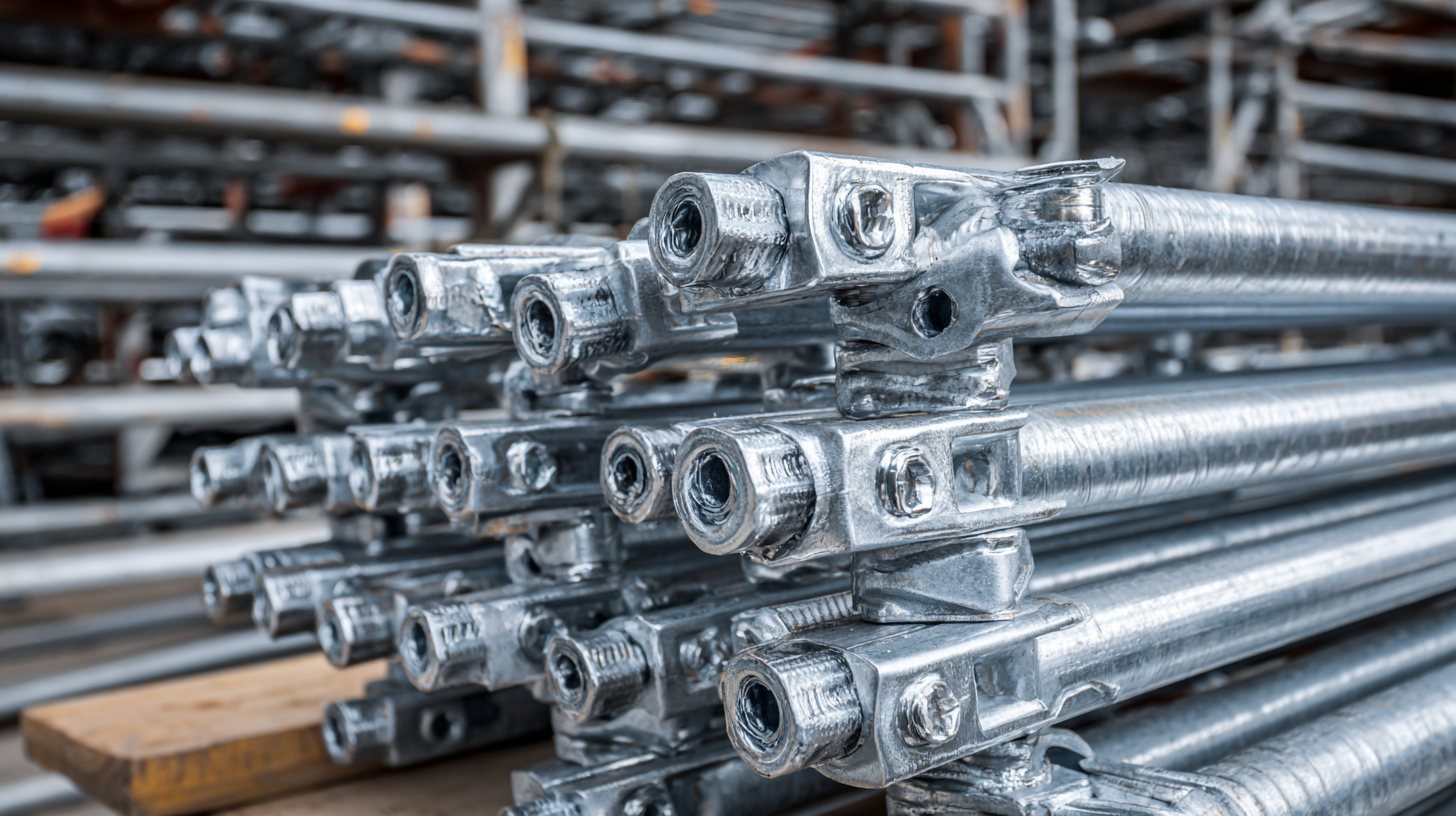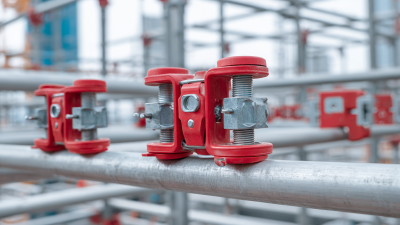 +86 18531741341
+86 18531741341
Leave Your Message
The efficient assembly of Ringlock Scaffolding Components is crucial in the construction industry, as scaffolding plays a vital role in ensuring safety and productivity on job sites. According to a report by the Occupational Safety and Health Administration (OSHA), scaffolding-related accidents account for approximately 65% of jobsites injuries. Ringlock scaffolding, known for its versatility and strength, has gained popularity, with the global scaffolding market projected to reach $4.76 billion by 2026, growing at a CAGR of 3.9%. Mastering the assembly of these components not only enhances workflow efficiency but also significantly mitigates risk, making it a critical skill for workers in this industry. This guide aims to provide step-by-step instructions on the best practices for assembling Ringlock Scaffolding Components, ensuring that projects are completed swiftly and safely while adhering to industry standards.

When assembling ringlock scaffolding, understanding its key components is vital for efficiency and safety. The ringlock system consists of several essential parts, including standards (vertical poles), ledgers (horizontal supports), and braces. The unique design of ringlock scaffolding allows for faster assembly due to its secure connections at multiple points, which can significantly reduce construction time by up to 30%. This time-saving feature is crucial in an industry where productivity remains a pressing concern, especially in light of recent stagnation within the sector.
Additionally, innovations in scaffolding and construction technologies have led to enhanced performance and safety standards. Recent reports indicate that the global scaffolding market is anticipated to reach USD 70 billion by 2027, emphasizing the critical role scaffolding plays in modern construction. Innovations such as advanced digitalization and improved materials not only ensure structural integrity but also contribute to the overall efficiency of building projects. With over 40 groundbreaking advancements recently showcased in the scaffolding domain, professionals are continually equipped with better tools to enhance their project outcomes.
When it comes to assembling Ringlock scaffolding efficiently, having the right tools at your disposal is critical. Essential tools include a ring spanner, scaffolding level, and a tying wire cutter, among others. The ring spanner, specifically designed for Ringlock systems, allows for precise tightening of the scaffold connections, ensuring stability and safety. According to the Scaffolding Industry Association, a well-equipped worksite can reduce assembly time by up to 30%, contributing significantly to project timelines and cost efficiency.
In addition to basic tools, investing in specialized equipment such as scaffolding hoists can greatly enhance the efficiency of assembly operations. These hoists minimize manual lifting and facilitate faster movement of components, which is particularly crucial in larger projects. Industry data indicates that integrating lifting solutions into scaffolding setups can lead to efficiency gains of 25% or more. Furthermore, maintaining an organized inventory of scaffolding components will streamline the assembly process, reducing downtime and minimizing the risk of errors on-site. By leveraging the right tools and strategies, contractors can ensure that their Ringlock scaffolding assemblies are not only fast but also adhere to safety standards and regulatory requirements.
Assembling Ringlock scaffolding can be straightforward if you follow a systematic approach. Start by ensuring that all components, including vertical standards, horizontal ledgers, and diagonal braces, are organized and within reach. Begin the assembly by erecting the vertical standards, ensuring they are plumb and positioned correctly according to your project’s design. Next, attach the horizontal ledgers at the designated heights, securing them in place with the use of the locking pins. This creates a stable framework for the platform.
Once the basic structure is established, incorporate diagonal braces to enhance the scaffolding's stability. These braces should be connected diagonally between the vertical standards and ledgers, forming a rigid triangular support. Check that all connections are secure before adding the working platform. Use appropriate decking materials based on project requirements, ensuring they are safely and effectively installed to provide a secure working surface. By adhering to these steps, you can efficiently set up Ringlock scaffolding, ensuring safety and reliability during your construction endeavors.
When working with Ringlock scaffolding, safety should be the highest priority due to the inherent risks involved in construction projects. Recent revisions to safety standards by the Occupational Safety and Health Administration (OSHA) emphasize the importance of adhering to stringent guidelines that regulate scaffolding design and assembly. These regulations aim to prevent accidents and ensure worker safety, particularly in light of recent incidents such as the scaffolding collapse in Manhattan that injured three individuals. Such events highlight the urgent need for reform in scaffolding safety practices.

To enhance safety when assembling Ringlock scaffolding, it is essential to follow best practices and ensure that all components are securely installed and properly maintained. Regular inspections should be conducted to identify any potential hazards, and workers must be equipped with appropriate personal protective equipment, such as guardrails and fall arrest systems. Moreover, the government is actively exploring ways to streamline scaffolding rules to better align them with risk levels present at construction sites. By prioritizing training and safety compliance, the construction industry can significantly reduce accidents and create a safer working environment for all involved.
Maintaining and inspecting your Ringlock scaffolding setup is crucial to ensuring both safety and efficiency on the job site. Regular inspections should be conducted before and after use, focusing on key components such as standards, ledgers, and bracings. Look for signs of wear, corrosion, or damage, and ensure all connections are secure. Any defective pieces should be removed from service immediately and replaced to maintain structural integrity.

Additionally, it's important to establish a routine maintenance schedule. This involves cleaning the scaffolding components to prevent dirt and residue buildup, which can lead to faster degradation of materials. Furthermore, training all crew members involved in scaffold assembly and disassembly on proper inspection techniques fosters a culture of safety. Encourage them to report any concerns immediately, as proactive communication can prevent accidents and enhance the overall lifespan of the scaffolding equipment.






